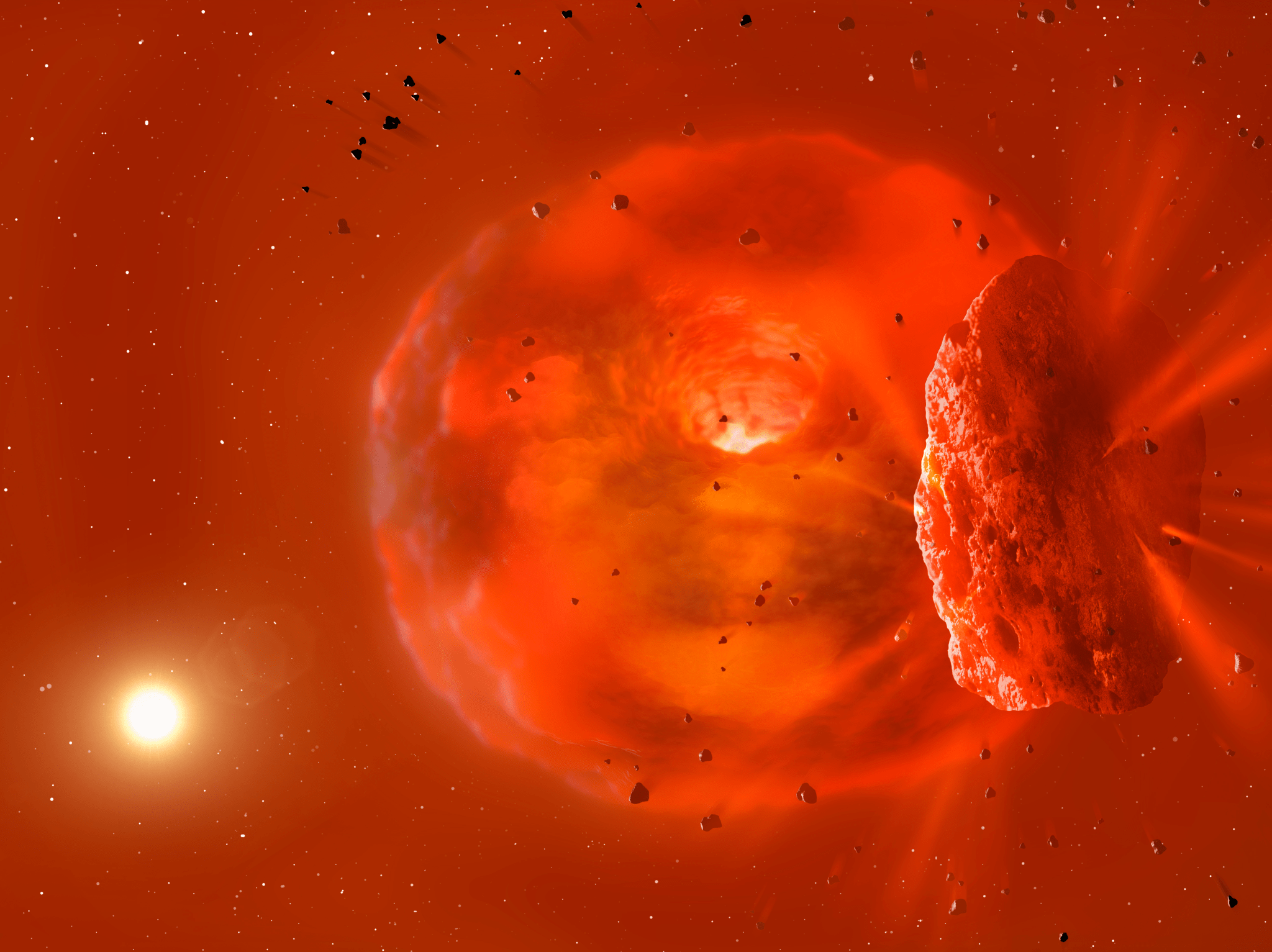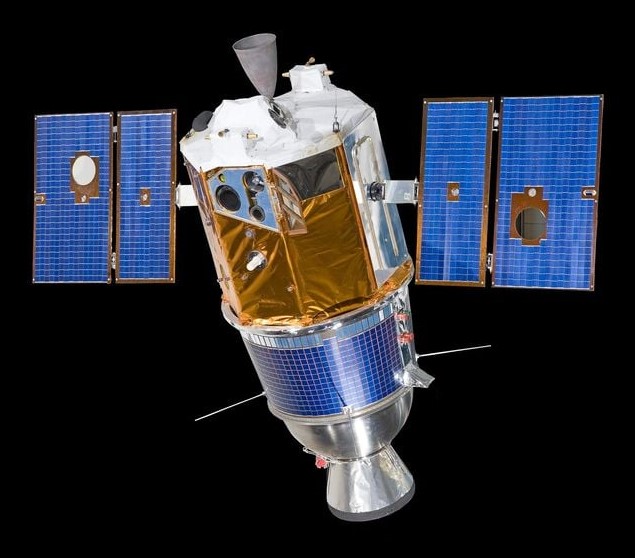Ancient cosmic light that has uniformly filled the universe since around 400,000 years after the Big Bang could act like a treasure map that guides scientists to the secrets of dark matter. The Cosmic Microwave Background (CMB) refers to the first light to freely travel across the universe. Its journey began after space had expanded and cooled enough to allow electrons and protons to form the first atoms, meaning electrons were no longer endlessly scattering photons, and the universe instantly went from being opaque to being transparent. The CMB, or…
Read MoreMonth: February 2024
Major X-ray sky survey could relieve crisis surrounding the universe’s ‘lumpiness’
A new analysis of how galaxy clusters evolved over the 13.8-billion-year history of the cosmos could help solve a long-standing tension surrounding the ‘lumpiness’ of our universe’s matter content. Down the line, it may also help scientists solve a host of other cosmic mysteries. The first data from the eROSITA all-sky survey of cosmic X-ray sources, which completed 4.5 full sky surveys in February of 2022, contained precision measurements of both the amount of total matter in the universe and the matter’s level of smoothness, or “homogeneity.” These findings could…
Read MoreOur universe is merging with ‘baby universes’, causing it to expand, new theoretical study suggests
Our universe is expanding at an ever-accelerating rate — a phenomenon that all theories of cosmology agree upon but none can fully explain. Now, a new theoretical study offers an intriguing solution: Perhaps our universe is expanding because it keeps colliding with and absorbing “baby” parallel universes. Studies of the cosmic microwave background, the afterglow of the Big Bang, have revealed that our universe is experiencing accelerated expansion. For this observation to fit with the main theory of cosmic evolution — called the Standard Cosmological Model — physicists assume that…
Read MoreWatch trailer for ‘Space: The Longest Goodbye,’ new film exploring astronaut mental health (video)
Scientists and mission planners are investigating how long-term space travel affects the human mind and body, as they work to get astronauts ready to make the big leap to Mars. The mental aspects — the feelings of loneliness, isolation and solitude that could come with a multiyear space mission — are increasingly coming under the microscope, as an award-winning new documentary shows. That film, “Space: The Longest Goodbye,” delves into the complexities of cerebral concerns to carve a pathway toward identifying and treating long-term mental health issues in space as…
Read MoreI put Abisko’s ‘cloud-busting weapon’ to the test during a Sweden northern lights adventure and was not disappointed
As we near solar maximum — a period of heightened solar activity within the sun’s 11-year solar cycle — the question on everyone’s lips is “Where should I go to see the northern lights“? The northern lights, or aurora borealis, are caused by energetic particles from the sun. When they hit Earth our magnetic field funnels them toward the poles (we have southern lights, or aurora australis, in the southern hemisphere too). All you need to see them is the right conditions, patience and a little bit of luck. While…
Read MorePrivate Odysseus moon lander beams home 1st photos from space
A pioneering moon lander has beamed home its first photos from the final frontier. Intuitive Machines‘ robotic Odysseus spacecraft snapped a few selfies with Earth in the background shortly after its Feb. 15 launch atop a SpaceX Falcon 9 rocket — and we can all check them out. “Intuitive Machines successfully transmitted its first IM-1 mission images to Earth on February 16, 2024. The images were captured shortly after separation from @SpaceX’s second stage on Intuitive Machines’ first journey to the moon under @NASA’s CLPS initiative,” the Houston-based company wrote Saturday…
Read MoreThis Week In Space podcast: Episode 98 — Inside NASA with Pam Melroy
On Episode 98 of This Week In Space, Tariq and Rod discuss what NASA’s up to with the agency’s Deputy Administrator Pam Melroy. This week, NASA Deputy Administrator Pam Melroy, who is also a former astronaut, commander of the space shuttle, and US Air Force test pilot, joins us for a very special episode. We discussed the recently announced delays to the Artemis lunar landing program, NASA’s long-term goals on the Moon, the overall trajectory of human spaceflight, Pam’s favorite memories of her time in space, and — perhaps our…
Read MoreUruguay signs Artemis Accords for responsible space exploration
Uruguay has joined the United States’ effort to establish widespread principles to guide space exploration. Uruguay’s foreign minister Omar Paganini signed the Artemis Accords on behalf of the South American country during the annual U.S.-Uruguay bilateral inter-ministerial dialogue on Feb. 15 in Washington, D.C. NASA Administrator Bill Nelson participated in the signing ceremony for the agency. “NASA welcomes Uruguay as the newest member of the Artemis Accords family,” Nelson said in a NASA statement. “The United States and Uruguay share a commitment to democracy and peace, and now, we expand…
Read MoreDiscovery Alert: Glowing Cloud Points to a Cosmic Collision
3 min read Discovery Alert: Glowing Cloud Points to a Cosmic Collision This illustration depicts the aftermath of a collision between two giant exoplanets. What remains is a hot, molten planetary core and a swirling, glowing cloud of dust and debris. Mark A. Garlick The Discovery: A glowing cosmic cloud has revealed a cataclysmic collision. Key Facts: Even within our own solar system, scientists have seen evidence of giant, planetary collisions from long ago. Remaining clues like Uranus’ tilt and the existence of Earth’s moon point to times in our…
Read More30 Years Ago: Clementine Changes Our View of the Moon
In 1994, a joint NASA and Department of Defense (DOD) mission called Clementine dramatically changed our view of the Moon. As the first U.S. mission to the Moon in more than two decades, Clementine’s primary objectives involved technology demonstrations to test lightweight component and sensor performance. The lightweight sensors aboard the spacecraft returned 1.6 million digital images, providing the first global multispectral and topographic maps of the Moon. Data from a radar instrument indicated that large quantities of water ice may lie in permanently shadowed craters at lunar south pole,…
Read More

